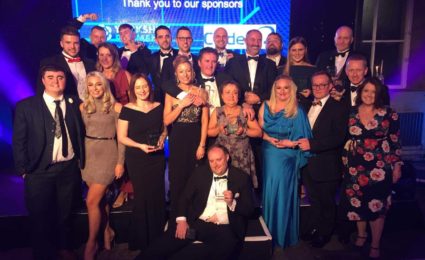Building Better Habits
Over Christmas I got the chance to re-read a couple of old favourites – James Clear’s Atomic Habits being one of them.
As I reflected on the year just gone – and my plans for the year ahead – it seemed a good time to reassess what I could be doing to make sure whatever new positive changes I take on this year are still happening at the turn of the year.
It reminded me that the people we work with – subject experts, consultancies and training providers – are all in the business of change.
They create transformations for their clients, often by providing them with a tailored roadmap and giving them the support they need to move from A to B in the most effective way possible.
All of these require reflection, purposeful practice and feedback – all over a period of time. The best way to deliver on this?
Support the building of new habits.
At the heart of Atomic Habits lies a simple yet profound premise: that a re-framing from outcome-based habits to identity-based habits can have a transformative impact on the new behaviour being adopted.
In short, outcome-based habits focus on what someone wants to achieve, while identity-based habits are about who a person wishes to become.
So if we want to help our clients get better outcomes – fueled by deeper, longer-lasting habits – can a shift to an identity-based approach create better outcomes?
The Reframe
As subject experts, it’s natural to help clients focus on outcomes such as mastering a new skill, completing a programme or reaching a specific milestone.
These goals are often clear and measurable, but they can be fleeting.
What happens when the programme ends, the skill is acquired, or the milestone is reached?
Instead, we may want to consider helping clients embrace identity-based habits.
Instead of focusing solely on “What do you want to achieve?”, ask them “Who do you want to become?”.
This subtle shift reframes their efforts:
Completing a training programme becomes “I am a confident leader.”
Mastering a skill becomes “I am a lifelong learner who seeks growth.”
Reaching a milestone becomes “I am a person who takes consistent action.”
Perhaps this year, we need to focus less on helping clients achieve specific goals and more on shaping who they aspire to become.
So what practical steps can you take to embed this alternative approach into your work?
1. Start with Their Identity
Work with clients to define the kind of person they want to become, or would like to see more of in their team.
This involves exploring their values, aspirations, and long-term vision.
For example:
- “I want to become a professional who leads with empathy and clarity.”
- “I want to be a business owner who builds a supportive, innovative team culture.”
- “I want to be a confident manager who can have robust conversations about finance”.
2. Re-Align Your Offering
Structure your programmes, resources, or services to reinforce the identity they want to adopt.
For instance:
- If they identify as “I am a proactive communicator,” provide tools and strategies for regular, meaningful communication.
- For “I am a resilient problem-solver,” focus on techniques to manage setbacks and stay solution-oriented.
It may be that you need to focus more on what they need to do, rather than what they need to know.
3. Encourage Small, Identity-Aligned Habits
Guide clients to take small, consistent actions that align with their desired identity.
For example:
- A client aspiring to be a disciplined leader could start with a habit of planning their top three priorities each morning.
- Someone identifying as a creative thinker might set aside 10 minutes daily for brainstorming or journaling.
What support structures can you put in place, as part of your offering, to scaffold these? Email nudges, downloadable resources, calendar templates?
4. Reinforce Progress Through Reflection
Help clients measure their growth by reflecting on identity-based questions, such as:
- “How have my actions this week reflected my goal to be a strategic decision-maker?”
- “What habits have reinforced my identity as a dedicated mentor?”
5. Use Identity-Centric Tools
Encourage clients, through your interventions, to create reminders and systems that support their desired identity.
One small action I’ve seen that can make a big difference is for people to organise their phone apps by identity groups:
- A folder titled “I Am a Confident Leader” with tools for planning, collaboration, and strategy.
- A folder labelled “I Am Knowledgable” with courses, books, and podcasts.
- A group called “I Am Resilient” with mindfulness and wellness resources.
These cues help clients stay connected to their identity, reinforcing their transformation daily.
Why This Matters for Expertise-Based Businesses
Helping clients adopt identity-based habits creates lasting impact.
Instead of merely achieving goals, you can support people in developing in what matters to them and who they want to become.
This approach not only enhances the value you deliver but also deepens client loyalty and trust – your work becomes part of their story.
So, as you work with clients and their teams this year, consider shifting the focus in your programme design from what they want to achieve to who they want to become.
Fresh insights direct to your inbox
Join the Candle Digital mailing list




